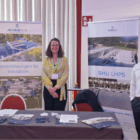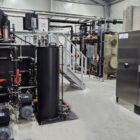Modular systems in container design offer a flexible and sustainable alternative to conventional hall construction, especially in the field of industrial water treatment. This design makes it possible to integrate complete plant systems in modular technology containers that are specially optimized for use in water and wastewater treatment. Thanks to their modularity, these systems can be adapted to individual requirements and at the same time offer advantages in terms of efficiency, cost reduction and environmental protection. ALMAWATECH uses this container design to implement biological plants, neutralization plants, flotation plants, CP plants, membrane plants and other systems in an efficient and resource-saving manner.
Table of contents
Advantages of container construction
1. flexibility and customizability Our technical room containers are highly adaptable and can be individually designed in terms of size, load capacity and the system technology they house. Typical equipment options include
- Priming and color coating with environmentally friendly high-solid 2-component paint, color of the client's choice.
- Insulation on all sides with mineral wool for optimum insulation.
- Interior walls clad in white, which ensures a clean and bright working environment.
- Integrated waterproof base tray made of PU cast coating (resistant to acids and alkalis) to protect the base from chemicals.
- Passenger access doors on the long side for safe and easy access.
- Tilt/turn window foroptimum ventilation and natural lighting.
- Material: steel/plastic (PVC/PP/PU), robust and durable.
- Sizes: 3 m wide and between 4 and 12 m long, customizable according to customer requirements.
Other options such as double doors, roller shutters, stairs with handrails for two-tier systems, as well as removable walls and flange connections for flexible expansion or stacking are also available.
2 Sustainability and CO₂ savings Modular container construction offers considerable ecological advantages compared to traditional hall construction. Particularly on an industrial scale, this construction method allows us to significantly reduce the use of concrete and steel, which not only shortens the construction time but also reduces the carbon footprint.
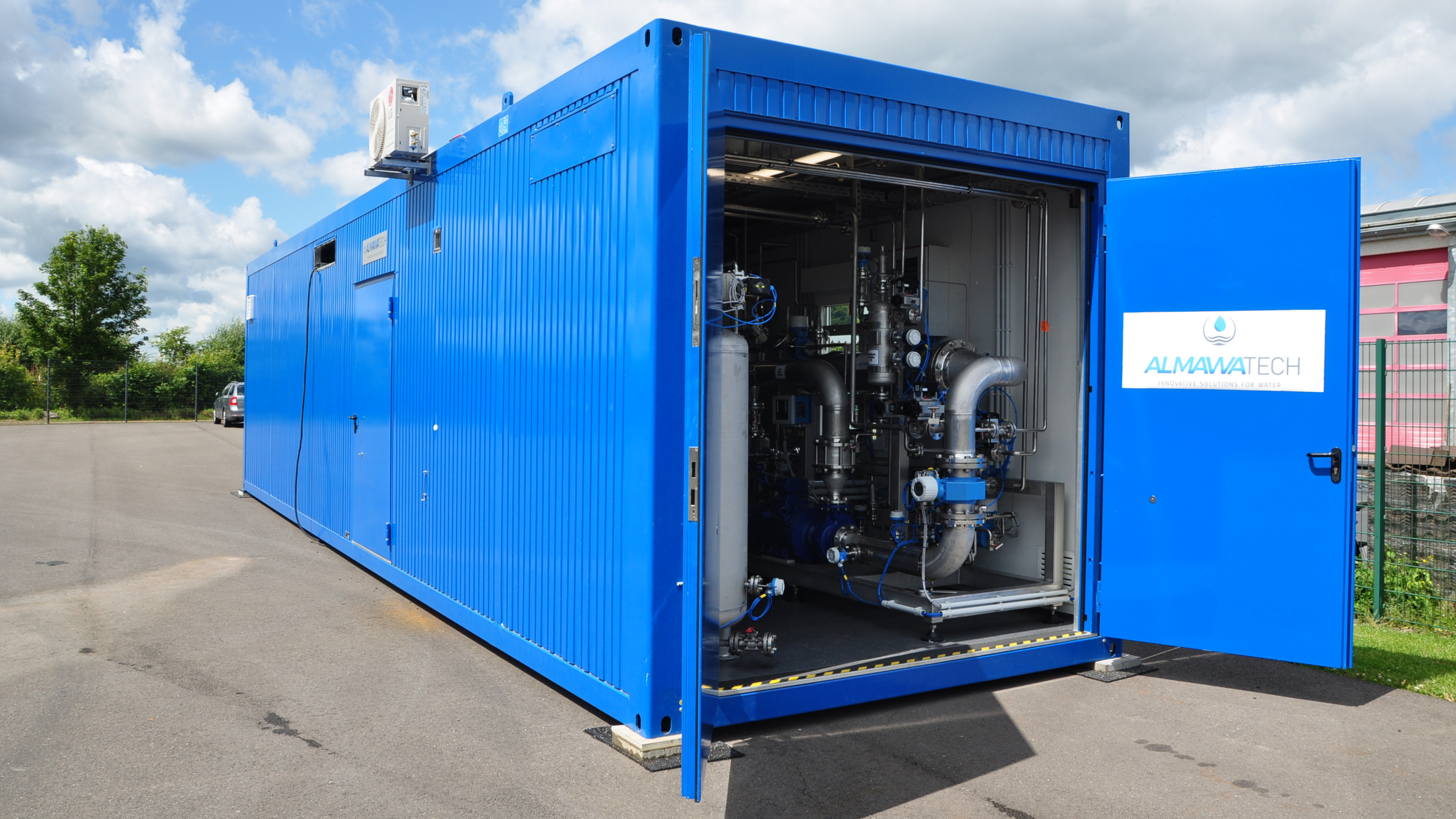
Photo: Containerized reverse osmosis system in the ALMA module
Comparison: ALMA modular construction vs. conventional hall construction
A typical example shows the savings of an ALMA modular construction method compared to a conventional construction method using a modular system measuring 2×12 meters:
Concrete consumption: While conventional hall buildings require around 100 tons of reinforced concrete, we can reduce concrete consumption to less than 50 tons by using modular foundation strips, which saves around 25 tons of CO₂ emissions.
Use of steel: Hall buildings usually require around 20 tons of steel for roof and supporting structures, which causes around 15 tons of CO₂ emissions. Our self-supporting modular containers eliminate the majority of this steel.
System technology and prefabrication: The system technology, such as pumps, pipes and valves, is prefabricated in the factory and only needs to be assembled on site. This significantly reduces assembly work and the associated CO₂ emissions.
Overall, the ALMA modular construction method results in a CO₂ reduction of over 50% compared to conventional construction methods - a decisive advantage for companies that want to reduce their ecological footprint.

Areas of application for modular container construction
Our container solutions are ideal for a wide range of system types in water and wastewater treatment:
- Biological plantsFor wastewater treatment with activated sludge processes or membrane bioreactors (MBR), the containers offer space-saving and efficient solutions.
- CP systemsOur chemical-physical plants for the removal of heavy metals, AOX, cyanides or hydrocarbons can be ideally integrated into containers.
- Membrane systemsReverse osmosis and ultrafiltration are housed in specially equipped containers and are easy to expand.
- Modular technical roomsAll system components can be installed in modular container solutions and flexibly adapted.
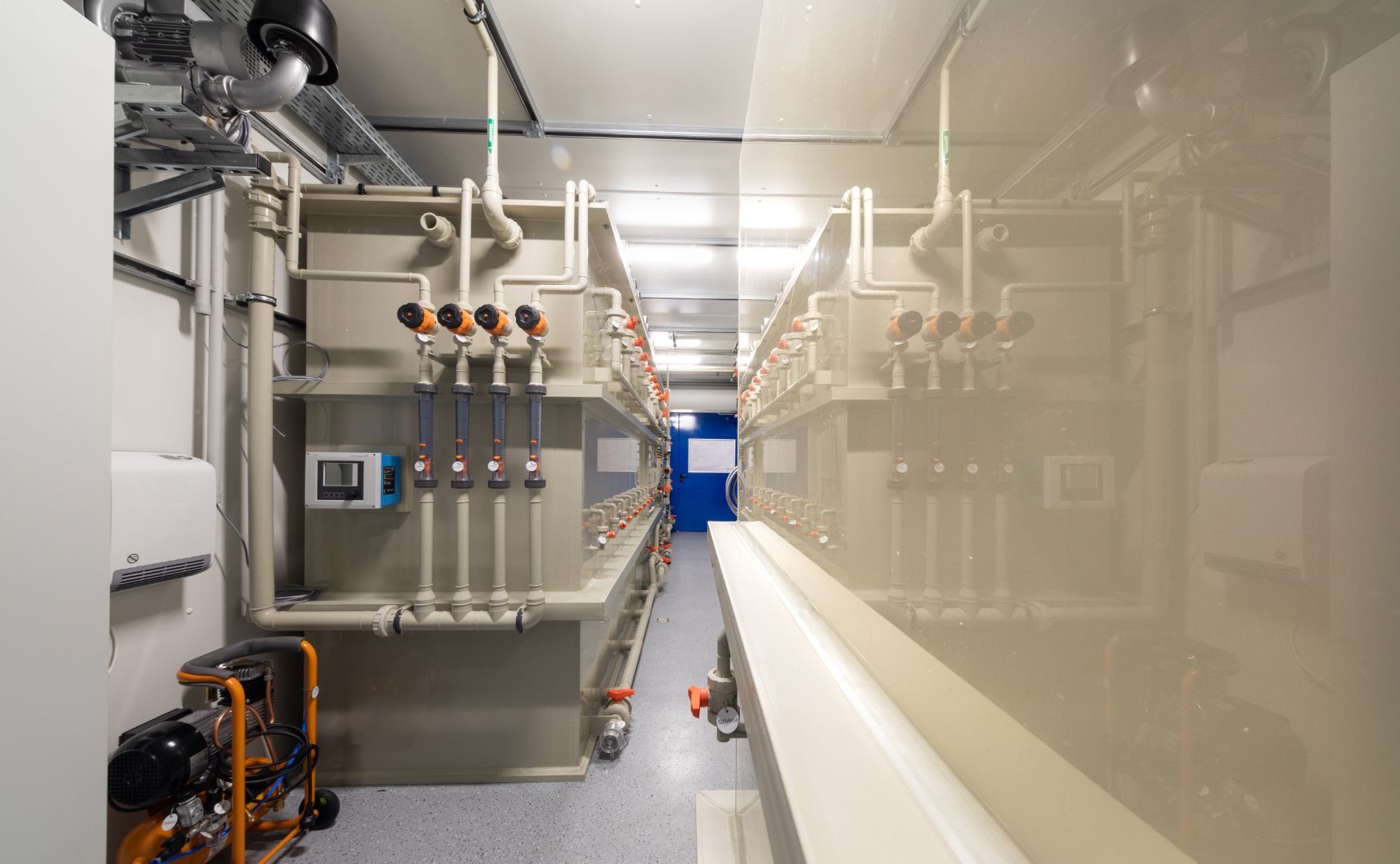
Photo: Research facility with Fenton process and membrane bioreactor in the ALMA module
Sustainable solution for the future
The ALMA modular design is a future-proof and ecologically responsible solution for companies with high water and wastewater treatment requirements. The significant savings in building materials such as concrete and steel as well as the shorter construction times not only reduce the consumption of resources, but also increase the efficiency of the plants.
In addition to the ecological benefits, container construction also offers considerable economic savings. Companies that opt for this sustainable solution can both reduce their investment costs and maximize their contribution to environmental protection.
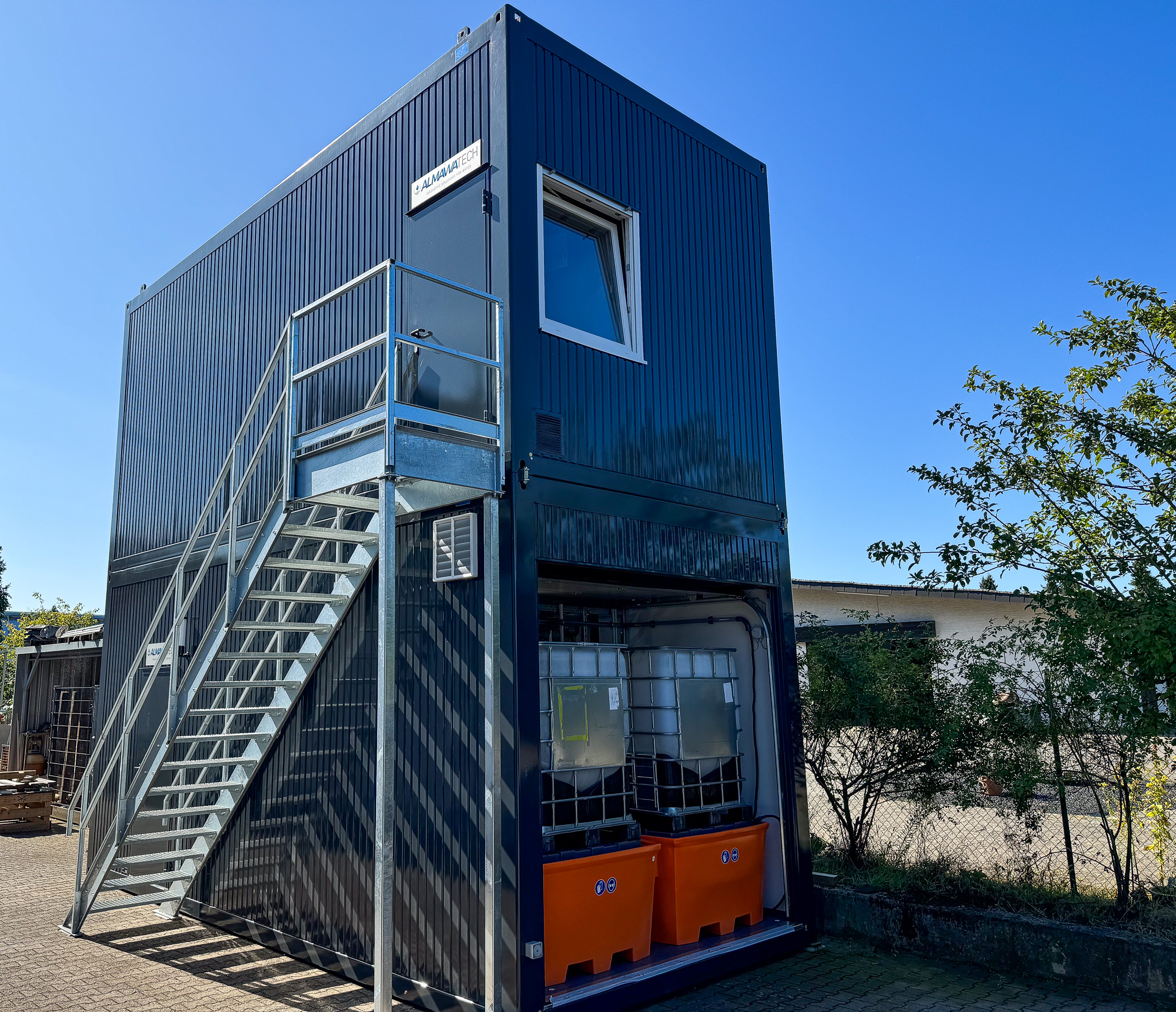
Photo: CP system in two-storey modular design
Conclusion
The modular container design in water treatment offers numerous advantages, including flexibility, sustainability and efficiency. The ALMA modular construction impressively demonstrates how innovative construction approaches can significantly reduce CO₂ emissions while optimizing investment costs. With customized solutions for biological plantsplants, neutralization plants, flotation plants, CP plants and membrane plants container construction represents a future-oriented alternative to conventional hall construction - sustainable and economical.
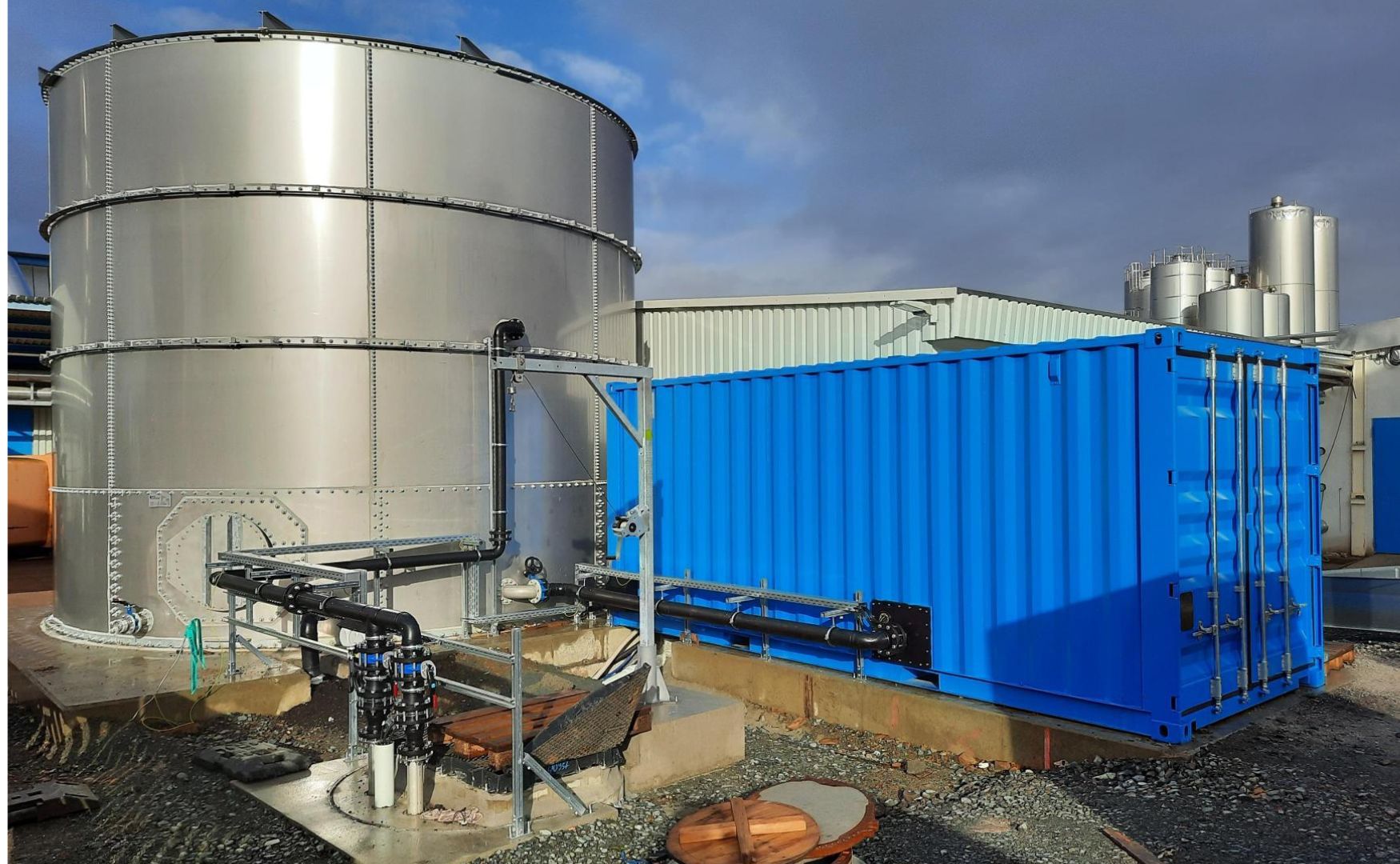
Photo: Neutralization system in the ALMA module with mixing and expansion tank

Photo: Reverse osmosis system and ultrafiltration in the ALMA module
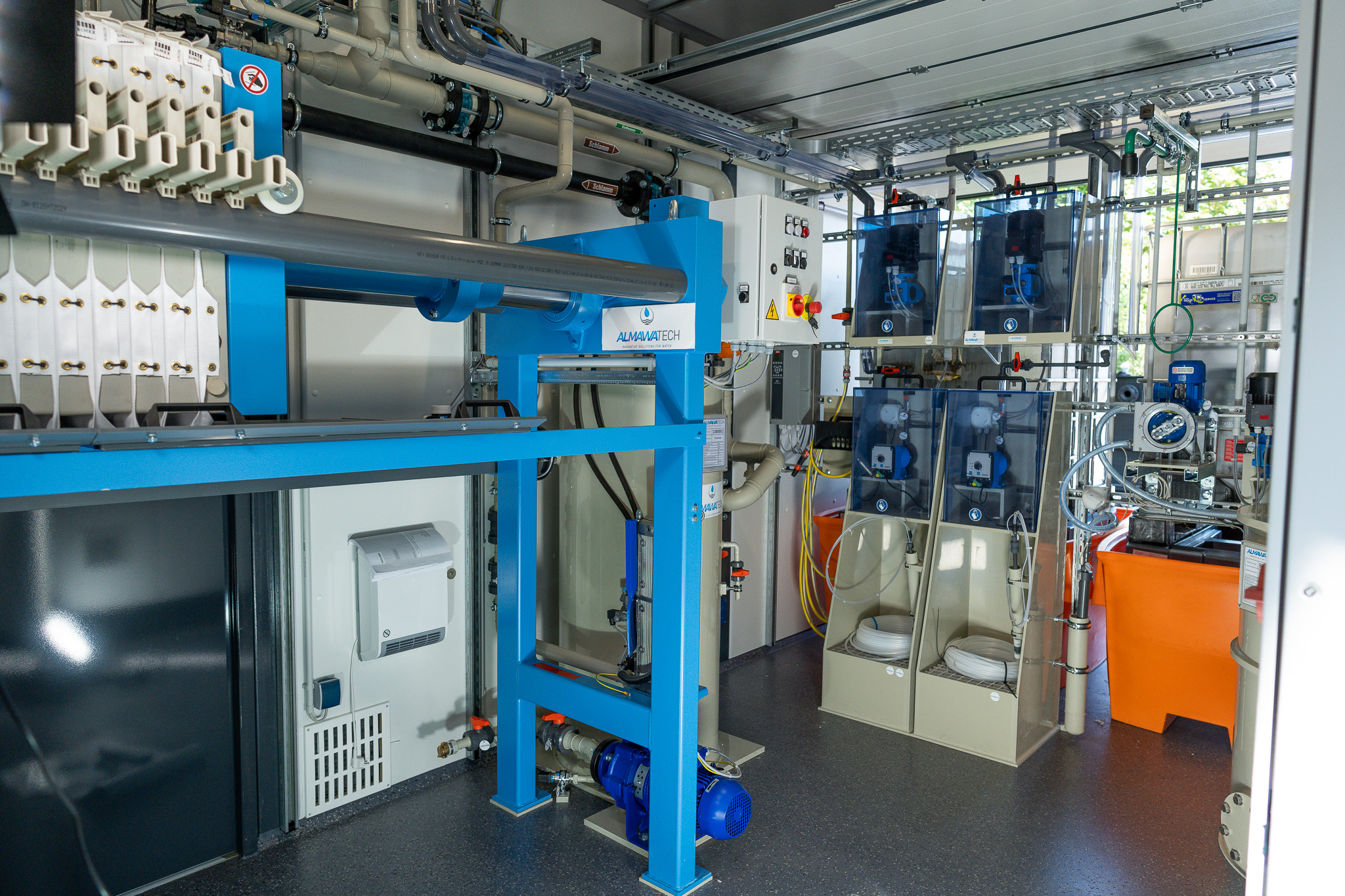
Photo: CP system with dosing stations and chamber filter press in the ALMA module
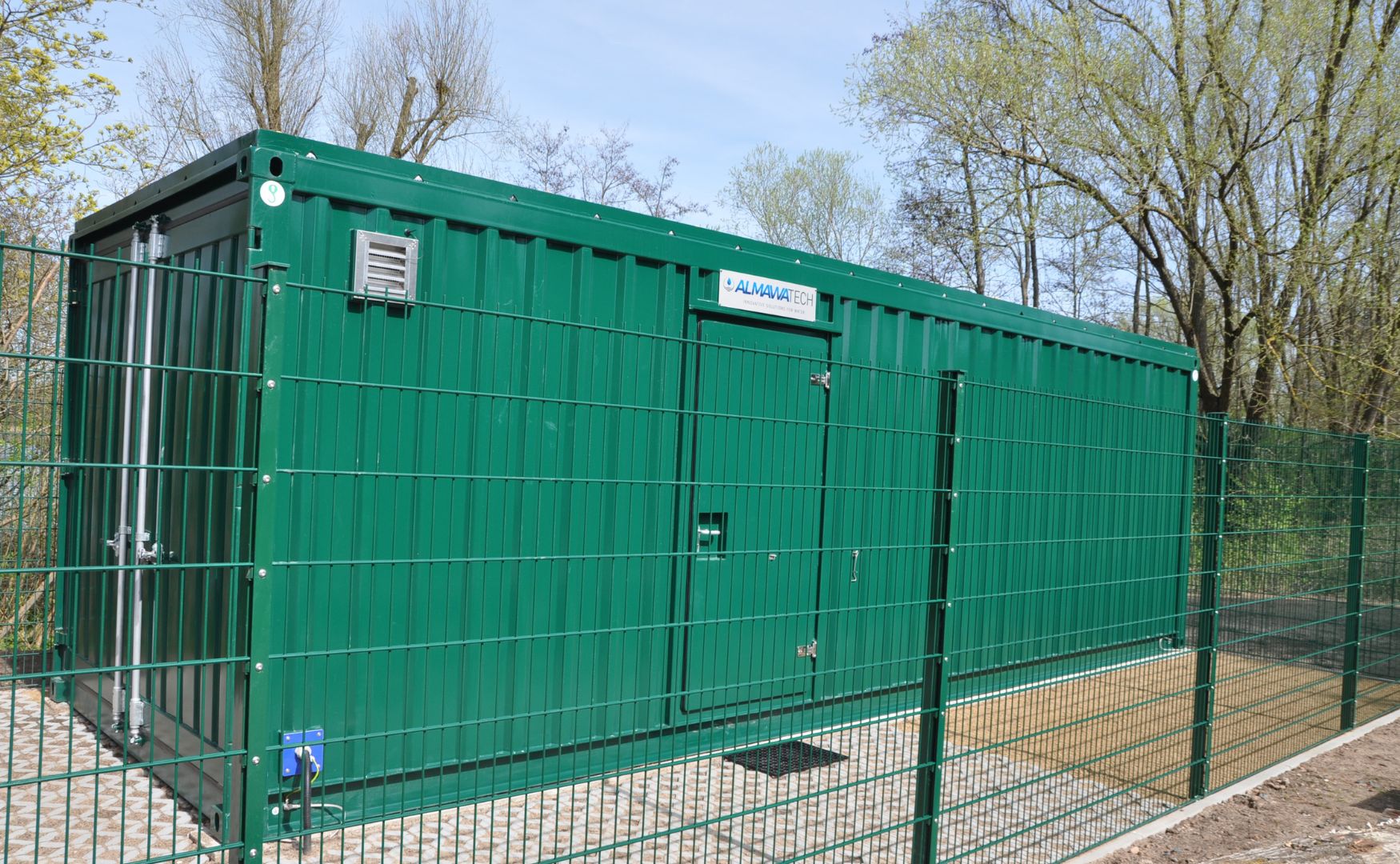
Photo: Flotation plant for phosphate removal from a lake, in the ALMA module



